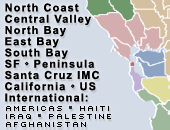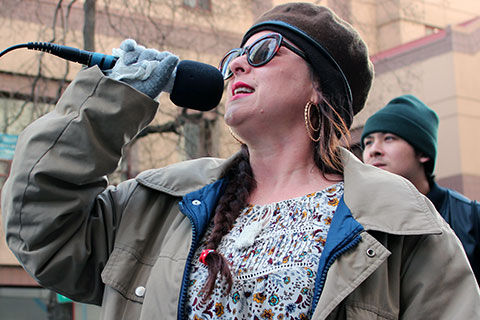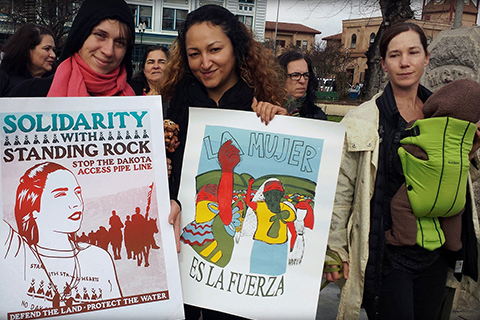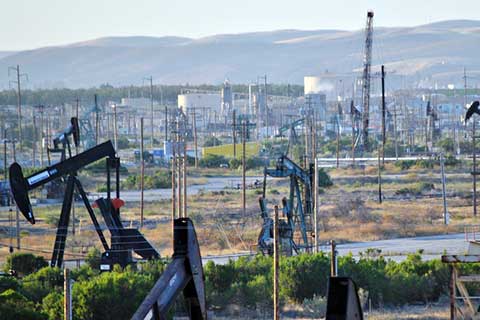Feature Archives
Wed Feb 15 2017 (Updated 03/21/17)
Monarch Butterfly Population Drops by Nearly One Third
The annual overwintering count of monarch butterflies released on February 9 confirms Monarch numbers fell by nearly one-third from last year’s count, indicating an ongoing risk of extinction for America’s most well-known butterfly. Scientists report that this year’s population is down by 27 percent from last year’s count, and down by more than 80 percent from the mid-1990s. A survey of monarch butterflies overwintering in California shows that the Western population has not rebounded. On the West Coast of California, key sites such as Pismo Beach and Natural Bridges saw lower populations this year than in the prior year.
Tue Feb 14 2017 (Updated 05/25/18)
Trump Administration Waives Water-Protection Rule for California Oilfields
The Trump administration this week granted requests from Gov. Jerry Brown's regulators to exempt three aquifers in California's Kern County from the federal Safe Drinking Water Act. Approval of these "aquifer exemption" applications by the Environmental Protection Agency gives oil companies permission to dump contaminated waste fluid into these underground water supplies. California officials plan to submit dozens of additional exemption applications for other aquifers across the state, including underground water sources in Alameda, Monterey, Ventura, Kern and other counties.
Mon Feb 13 2017 (Updated 02/14/17)
Lake Oroville Surges Over Emergency Spillway for First Time in History
Water from Lake Oroville flowed over the emergency spillway at Oroville Dam for the first time in the reservoir's 48-year history after the water level exceeded 901 feet in elevation on February 11. The water slowly began to flow over the concrete weir of the auxiliary spillway, down a hillside and into the Feather River. After saying the situation was stable and public safety was not threatened, state officials reversed course and issued evacuation orders late in the afternoon of February 12. On February 13, state officials would give no timeline on when the 188,000 evacuees can return to their homes.
Mon Jan 30 2017 (Updated 02/01/17)
End Domestic Violence, Boycott Driscoll's, and Ban Fracking
A diverse array of Sacramento community groups participated in ChangeFest, a climate mobilization rally at the state capitol on January 21 as part of a week of anti-Trump street protests in Sacramento centered around the Presidential Inauguration. Speakers and musicians covered issues ranging from violence against women, to the Driscoll’s boycott in support of indigenous farmworkers in Mexico, to successful campaigns to ban fracking in San Benito and Monterey Counties, to the No DAPL struggle at Standing Rock. ChangeFest took place concurrently with the 20,000-strong Women's March in the Capitol.
Sun Jan 22 2017 (Updated 01/29/17)
Millions of Women Take a Stand Against Trump the Day After Inauguration
On January 21, one day after Trump was inaugurated as the 45th President of the United States, women and allies in cities across the U.S. and countries throughout the world marched in protest in record numbers. In Washington, D.C., where the original Women's March was called, around 500,000 attended, far more than had come for the Trump inauguration itself. In Los Angeles, some estimates set the number present at nearly 750,000. Some of the largest marches in Northern California were in Oakland, San José, San Francisco, Sacramento, and Santa Cruz.
Sat Jan 14 2017 (Updated 01/16/17)
California Agency Proposes Turning Monterey County Aquifer Into Oil Waste Dump
Just months after Monterey County voters approved a ban on underground injection of oil waste, California regulators have announced a plan to turn an underground water supply in the county over to the oil industry for injection of contaminated waste fluid. The proposal — announced by California's Division of Oil, Gas and Geothermal Resources — seeks to exempt an aquifer that runs under the town of San Ardo from the federal Safe Drinking Water Act. A similar aquifer exemption is currently under consideration in Livermore.
Tue Dec 20 2016 (Updated 12/21/16)
Tulare County Has Most Agricultural Pesticide Illnesses in California
The California Department of Pesticide Regulation (DPR) released a report last week detailing the 2014 results of their Pesticide Illness Surveillance Program. The report, documenting all reported pesticide-related illnesses from all California counties, shows 20.1% of agricultural pesticide-related illnesses occurred in Tulare County, making it the county with the most agricultural pesticide illnesses in the state. Santa Cruz County came in second with 17.2%. Of the 53 counties with documented pesticide-related illnesses in 2014, Tulare County accounted for over 1 in every 5 cases of poisonings from agricultural pesticides.
California:
 21
21









